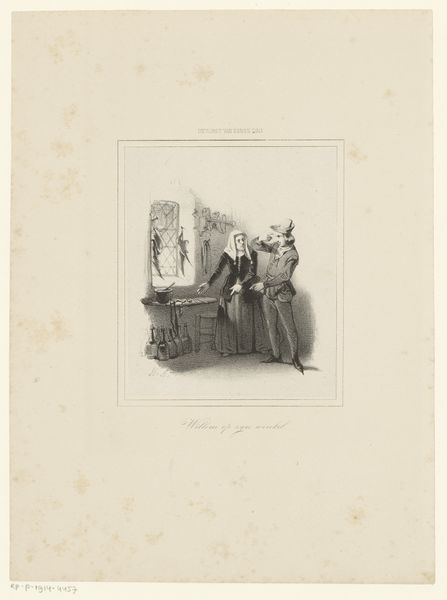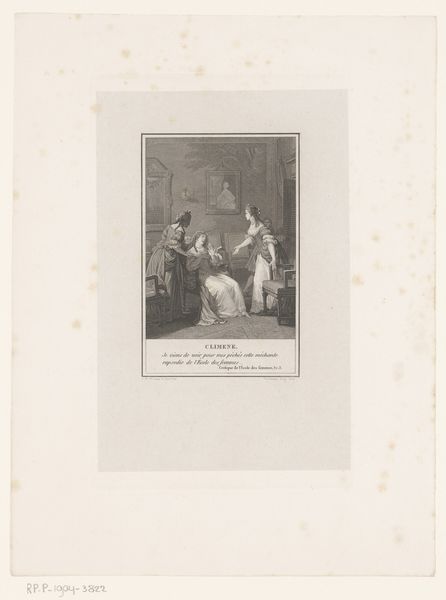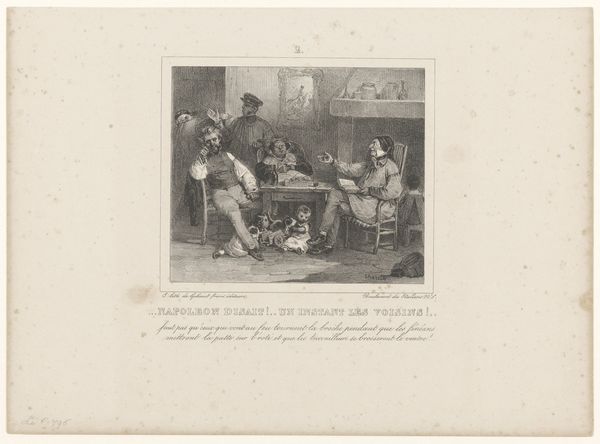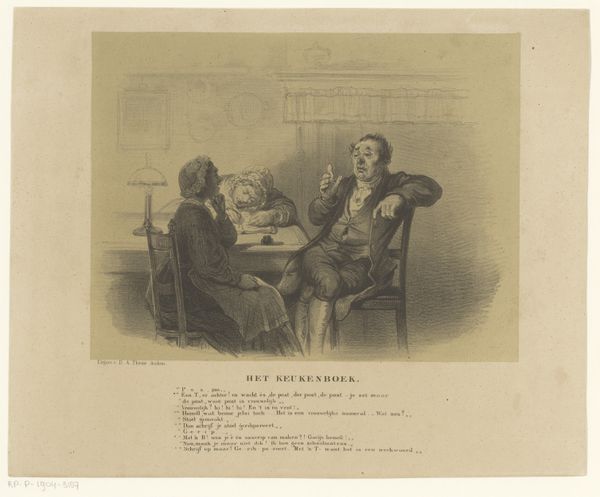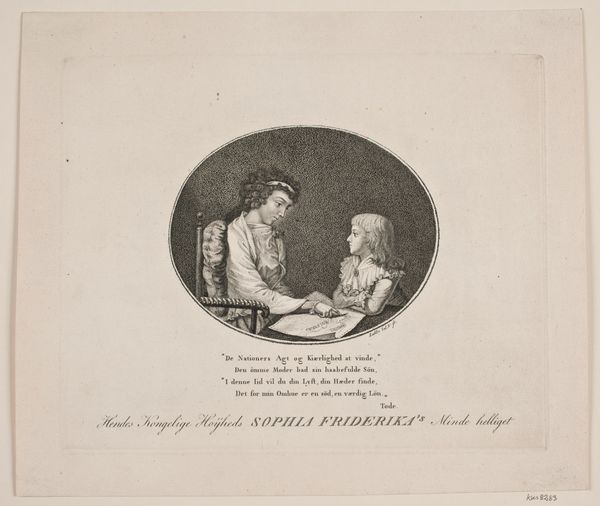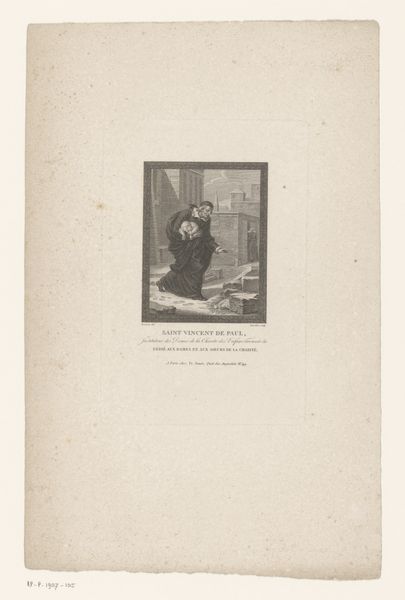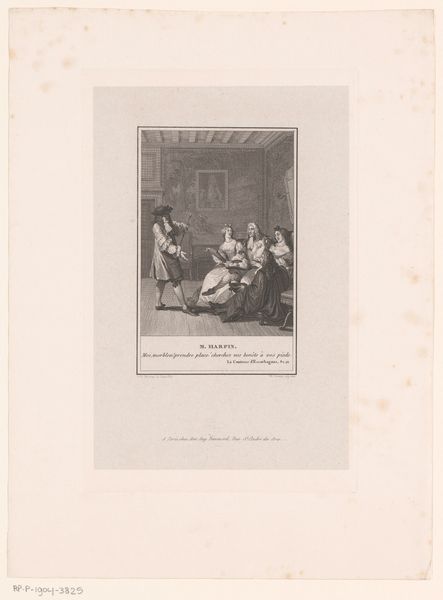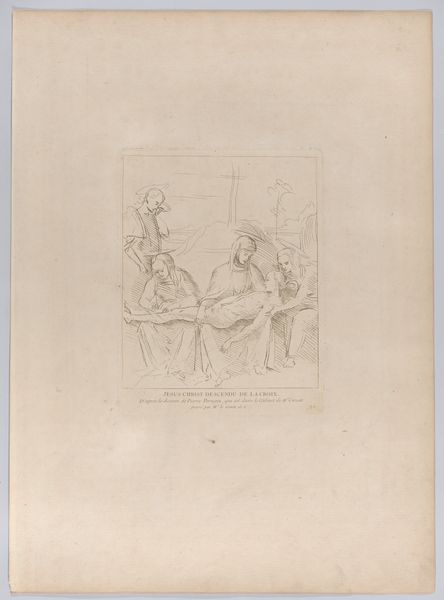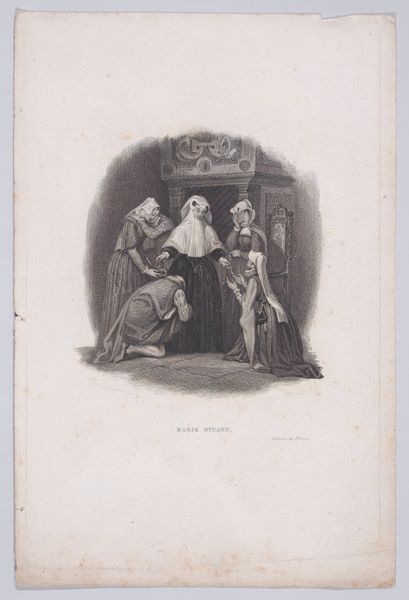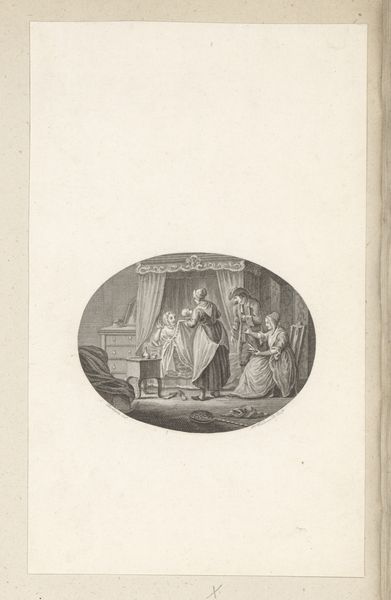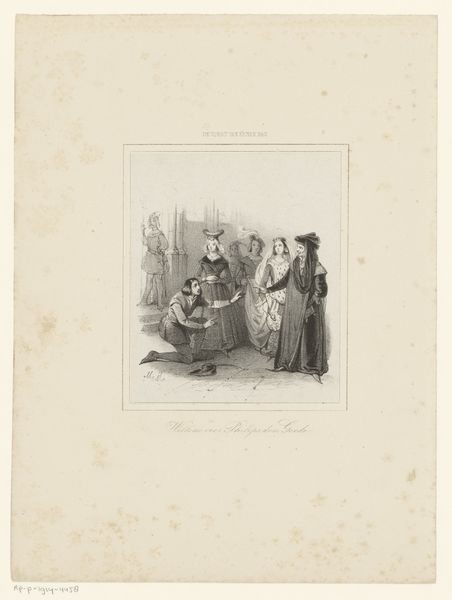
drawing, paper, ink, pencil, pen
#
pencil drawn
#
drawing
#
narrative-art
#
pencil sketch
#
paper
#
ink
#
pencil
#
pen
#
genre-painting
#
academic-art
Dimensions: height 264 mm, width 363 mm, height 374 mm, width 363 mm
Copyright: Rijks Museum: Open Domain
Curator: Welcome to the Rijksmuseum. Before us hangs "Vader en zoon in gesprek," which translates to "Father and Son in Conversation," a drawing made between 1851 and 1897 by Alexander Ver Huell. He used ink, pen, and pencil on paper to create this piece. What's your immediate impression? Editor: It’s cozy, in a strangely formal way. The etching-like details make it feel both intimate and distant. I imagine that the black and white and sharp lines create a narrative depth that can leave someone feeling very satisfied. Curator: This work offers a fascinating snapshot into 19th-century social dynamics. Consider the context: genre painting became highly valued for reflecting everyday life and its accompanying morals to the bourgeoisie of that era. How might the depiction of the domestic sphere shown affect that perception of values? Editor: Ah, you're framing it from that angle, but I was thinking more literally. I notice the clear power dynamics shown: the elder sits reclined in a large chair as the young son gestures earnestly to his right side. It makes you wonder if there is a will on the table that is about to cause drama. And they seem to share this moment in front of staff… I love the detail! Curator: Good observation! Ver Huell subtly uses the domestic scene to reinforce specific societal roles. What are your thoughts on how such images functioned within the art world and what specific effect could these visual narratives have in relation to social expectations of men and fathers? Editor: Maybe it’s all just wishful thinking, but is also really tender, to be sure. Like looking back at a past where maybe conversation and familial structure weren’t so hard. I appreciate that we can look into the work and into each other to have a new lens in life. Curator: Precisely. By exploring themes of familial relationships and everyday life, we get some historical reflection and deeper understandings about our roles and history. It encourages the public role of art as a critical aspect of its time, if you will. Editor: I'm happy we have gotten this deep, but I think now the piece will stand out better and the nuances within can come to light now.
Comments
No comments
Be the first to comment and join the conversation on the ultimate creative platform.


